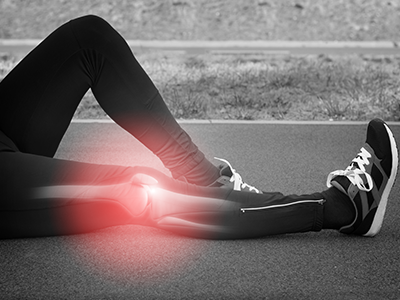Physio for Runners Knee

Patellofemoral pain is often commonly referred to as “Runners Knee” or anterior knee pain. This condition is a non-specific term referring to pain around the front of the knee in the kneecap (patella) area.
Runners, or people who play sports that involve running and/or
jumping, will often develop this condition when starting training for the first
time or when returning to exercise after a period of rest. This happens because
when we have a break from training all the muscles, tendons, soft tissue and
bony structures decondition, become weaker and are less able to tolerate
loading. As a result, when we get back into running the patellofemoral joint
can be loaded more than usual leading to irritation and inflammation of the
area.
Another cause of patellofemoral pain can be related to running
biomechanics. Runners who have a cross-over running gait where one or both of
their legs crosses the midline of their body are more at risk of developing
this condition. This is because when our legs cross the midline of our body we
put greater tension on the outside (lateral) structures of our knee. Through
repetition of the running gait cycle this repeated tension can cause a small lateral
pull on the kneecap, causing it to sit in a slightly different position to
normal. When this happens the point of friction is changed, overloading certain
areas on the under-surface of the kneecap and leading to inflammation and pain.
Treatment for runners knee includes a combination of modifying
load and correcting any underlying biomechanical factors or strength
deficiencies. If you are a runner your running load should be modified so that you
can complete your entire session without the pain going over a 2/10 pain score.
This can be done by reducing the total amount of running in the session or
avoiding hills which can increase stress in the patellofemoral joint. The pain
should also settle within a few hours of completing the run and be no worse the
next morning. If you can fulfil all these criteria then you can be confident that
you can continue running without worsening the condition. The same principles
apply to other sport and exercise sessions.
Correcting any biomechanical issues related to your running gait can also help to reduce the pain associated with runners knee. As mentioned earlier when a runner’s foot crosses over the midline of their body the risk of this injury occurring increases. Simply cueing yourself to not let your legs cross over each other, or even simpler not allowing your knees to touch when running, can help to reduce pain. If you are unsure whether you are doing this correctly it can be very useful to have a running gait assessment to have your technique analysed.
Correcting strength deficits
can also help in the management of runners knee. When there are significant weaknesses
in the gluteal muscles that produce hip abduction it can lead to an increase in
hip adduction on landing. This means the leg collapses inwards, potentially contributing
to a cross-over running gait and putting more strain through the lateral
structures of the thigh. Weaknesses in quadiceps and hamstring muscles can also
increase stress through the patellofemoral joint so strengthening these muscles
will also be helpful.
Your physiotherapist may
also tape your kneecap to reduce your pain. This will often allow you to maintain
a higher level of running and strength exercise while we resolve your injury. The
tape is used to hold your kneecap in the right alignment while we restore the
correct balance of muscle length and strength, and work on improving your
running biomechanics.


